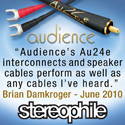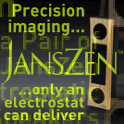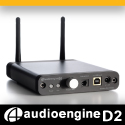|
|
You are reading the older HTML site
Positive Feedback ISSUE 63
dr. feickert Firebird Turntable - A Modern Classic as reviewed by Marshall Nack
I first heard that Chris Feickert was working on an ambitious, next-gen turntable project while I had his Blackbird model under review about a year ago. Impressed with that model and anticipating even better, I was on the phone with the importer to let my interest be known post-haste. In the meantime, as things turned out, the Blackbird became my reference. Setup Time passed… Then, three weeks before the New York Audio & AV Show 2012,Darren Censulo of Avatar Acoustics, the North American importer, paid me a visit. He brought the new table… and nothing else. The long anticipated Feickert tonearm was delayed. Oh, well. We cannibalized the DFA-12.0 arm, cartridge and phono cable from the Blackbird in situ and then moved the Firebird onto the Vibraplane ELpF platform, all within half an hour. This approach had the benefit of eliminating all variables but one—the turntable.
Appearance Visiting Audiophile: "So, what's new?" Your Humble Reviewer: "You're lookin' at it." VA: "What do you mean? Where?" YHR: "That's the new Firebird from Dr. Feickert." VA: "Really? You sure it ain't the Blackbird?" You gotta do a double take because on first glance big brother looks just like the Blackbird. It subtly dawns on you that the object in view is indeed larger in all dimensions.
Dr. Feickert Blackbird Cosmetics The Firebird looks like many turntables with its retro-cool style. Everything you see has a purpose, though. There are no frills, nothing appears over-built. It is well made without suggesting expensive manufacture, utilitarian rather than ostentatious. My sample had the same matte black and brushed aluminum finish as the Blackbird it replaced. Darren made a point of coming back during the weekend of the New York Audio & AV Show, and a good thing he did! When we initially set up the Shelter Harmony cartridge using the (included) Feickert Protractor, we both inspected the alignment and gave it the nod. But now he had the new computer assisted Dr. Feickert Adjust + Cartridge setup tool with him.
The graphical readouts and analysis made it clear that the azimuth was off by about 1.5 degrees. Visually, the cantilever was listing to the left, so we had compensated for that, but it turned out the stylus itself was actually canted to the right. This dramatically impacted the sound and there is no way you would know it by visual inspection. Bottom line: Cartridge setup is finicky and relying on visual inspection is not reliable. You need tools like these to get the performance you paid for. Component Classification Scheme After pondering the many analog products that have passed through lately, I've developed a three-tier classification scheme. In ascending order, they are:
Noise Byproducts The Firebird immediately positioned itself as a member of the third tier, while the Blackbird clearly resides in the Mid Level. How did I know this? Recently, I reviewed another table, the Transrotor Rondino (MSRP $14K; the Firebird is $12,995 and the Blackbird is $7995—all without arm). Comparing the Transrotor to my reference Blackbird was actually the genesis for the three-category classification scheme. The Rondino quickly brought to my attention the existence of noise byproducts in the Blackbird, the Mid Level representative. Of course, noise is always an issue with analog. Mostly we talk about "noise floor," but this wasn't the issue here—the Blackbird is commendably quiet in this particular. Comparison to the High End product revealed new, wholly unforeseen, noise byproducts. There was an unwelcome roughness in the Blackbird's transient and a spray of unrelated sound particles surrounding it. Both of these can blur the leading edge, leaving the pitch of the note unresolved and also serve to hype the impact of the transient. Eeeks! What a rude awakening! Understand that the Blackbird had been my reference for low-noise up until this comparison. (Note: the Blackbird sample I'm using does not incorporate the latest upgrades, trickle down from the Firebird model. I'm told current Blackbirds with these upgrades knock on the door of the third category. The good news is that the importer has incorporated them while keeping the same MSRP.) There's more. Following the Blackbird's transient, I noticed a second byproduct that rides along with the signal and tracks it. This "filler tone," or white noise, is unrelated to the sound of the instrument(s), although it is easy to think it might be coming from them. It even fluctuates in sound pressure level with the signal, becoming loud when it does and stopping when the signal stops. These two kinds of noise artifacts are not in the grooves, because they're not present with either the Rondino or the Firebird—the Blackbird creates them. It is amazing what the mind will ignore as it sorts through sensory input and tries to understand it. This is the sort of thing you notice when you move up a grade—that's why we have different categories. Firebird vs. Blackbird Now, on to differences between the two Dr. Feickert models. Timing is one of Dr. Feickert's strong suits and PRAT is excellent in both tables. However, those rough edges related to noise byproducts in the Blackbird have been smoothed in the Firebird. The Firebird takes you on a luxuriously silky ride. Yet, arriving at a crescendo is likely to be even more grand and expansive, dynamically speaking. Thirdly, the Blackbird was notable for its tight grip over the soundstage. Control was so focused, bordering on unyielding, that it became a point of contention amongst my panel. Some people liked it, but others felt the tight grip contributed to an occasional congestion. The Firebird, like the Blackbird, dives deep and retrieves a huge wealth of info from the grooves, but it presents it with more ease and relaxed control. Soundstage images are more limber, with more freedom: the music breathes better. Turntable Voicing Now I'll tell you what the two Feickert tables have in common and how both differ from the Transrotor. If you survey available offerings, turntables fall into two major trends. Tables from Linn, Audio Note and Shindo are what I would call the Classic vein. Current tables from these manufacturers look and sound like their forebears, albeit with many generations of improvements layered on top. They are robust with a tad extra midrange body and bloom. A middle-aged audiophile who has grown up with analog will feel right at home with one of them. To a degree, the Dr. Feickert footprint aligns with this vein. In the other, let's call it Contemporary, vein are tables like the Transrotor Rondino I just reviewed. If you hadn't been on the scene for a while and came upon the Rondino, you would not know what its purpose was—it doesn't look like tables used to look.
Transrotor Rondino And the Rondino does not sound like tables did back in the day. These tables dispense with the Classic analog footprint and strive to sound very pure and neutral. They don't embellish the sound at all. Sometimes they can become thin or analytical depending on the LP. In rigs with Contemporary turntables and digital front-ends, you don't get a mental dislocation when you swap between the two. In these rigs the two media are coming to sound more and more alike. (I would speculate the Rondino's designer is listening to developments in digital, especially hi-res digital: I'd also bet that digital engineers have been paying attention to what makes analog sound right.) For our first LP, let's play the Sonata for Flute, Viola and Harp, from Debussy Chamber Music, a delightful (and reliably good sounding) reference featuring the Athena Ensemble (Chandos Super Analog, ABR 1036). Via the Firebird, timbre is outstanding—smoother, sweeter, more complete, a big jump in credibility. I can readily distinguish the viola from the harp by their discrete placement and the enhanced body and weight of the harp. Its low notes make a bigger crescendo and have more punch than the viola. There's also a nice pocket of air surrounding each instrument. Hall cues abound and the soundstage is huge, with a real panorama unfolding in the width. Images within the soundstage are realistically sized. The Firebird definitely has the feel of classic analog, but don't get the impression either Feickert table is awash in bloom and warmth. Please understand I'm talking about a kinship with the classic voicing. Most people would not hesitate to place them in the neutral camp. I'm reporting this to help you make the right choice to suit your preferences. Personally, I enjoy this small injection of Classic embellishments. It makes the music a bit more fun and engaging, not to mention more tolerant of less than perfect LPs (which is the vast majority of my collection). And, in truth, most audiophile systems could use a little help here. It's All About Materials and Geometry There are lots to talk about in the Firebirds materials and design. There are reasons for every aspect of the Firebird's appearance. The expanded plinth dimensions (22" W x 3" H x 18" D), which just fit within the confines of my Vibraplane ELpF's floating top plate, are not accidental. They have been carefully calculated to prevent resonances from propagating. (I said this about the Blackbird and it applies as well to the Firebird.)
The plinth is constructed of aluminum top and bottom layers with thermally-treated MDF in the middle. The 2" high platter is made from poly-oxy-methylene (POM). POM is a rather slow compound in terms of propagation of sonic energy, but one that is similar to the vinyl used to manufacture records. Plus it has anti-static properties, which help suppress clicks and pops in playback. There are eight 1¾" brass inlays spaced around it. The metal adds inertia and gives additional smoothness to the sound while refining details.
The Armboard & Record Clamp In the Firebird, the arm board and the record clamp are solid aluminum. The clamp is screw-down with a special 3M coating on the bottom surface where it touches the record label. The Feet The three, large, adjustable screw-in feet are a new design made from aluminum and a soft foam rubber dampening material on the bottom, with tube damper-like rubber gasket rings around them. Three Motors, One Belt One of the major differences between the Blackbird and the Firebird is the latter has three motors. One motor serves as the master, the other two are slaved. Are three motors better than two, or one? From discussion with the designer, if you use one motor it will tend to pull the platter in its direction. With two motors on opposite sides, as is the case with the Blackbird, the reactive forces are offset and equalized; with three, there's a more symmetrical pull. The upshot is less gyration of the platter. A secondary benefit is the two slave motors feed back information to the master via a complex motor controller microprocessor for the purpose of achieving a better randomization of wow and flutter. The human ear is highly sensitive to regularly occurring patterns of wow and flutter. Random occurrences do not register nearly as much. The motors are expensive, three-phase asynchronous types. The new bearing has a huge recess area where there is no contact to the bearing bushing. This prevents excessive noise such as rumble. Also it adds to more accurate speed stability.
The Speed Control The speed control is a new design with push buttons for on/off and speed selection. The new knobs look better and are operated by an additional micro controller. Like the Blackbird, the Firebird takes a straight DIN plug that enters from underneath the plinth and makes a sharp bend as it exits. The phono cable must be flexible. Kubala-Sosna Emotion was my choice here. Power is supplied by a small plastic AC/DC converter box. A thin wire exits the converter box and plugs into the under side of the table via a little headphone jack. The first thing I upgraded was the detachable power cord on the converter with a Kubala-Sosna Elation!. Conclusion There is a definite family resemblance between the Dr. Feickert Blackbird and the new Firebird turntable. Both evidence German Bauhaus aesthetics—the principle of form following function. However, there is no mistaking the sonic advantages of the new design. In my rating scheme, the Blackbird leads the pack at the Mid Level, while the Firebird sits comfortably in the High End. We are currently in a vinyl renaissance with two trends dominating product voicing. The Classic vein looks back in terms of appearance and sound, honoring the vinyl heritage. In what I designate as the Contemporary vein are tables that strive to impart no footprint. They don't embellish the sound at all. The Dr. Feickert footprint resides in the Contemporary camp, but has aspects of the Classic vein. Dr. Feickert tables are robust with a tad extra body and bloom, and give the transient a little extra emphasis. If you're in the market for a combination of advanced engineering, outstanding data retrieval, and a touch of Classic analog's smile-factor, the Dr. Feickert Firebird is a must audition and belongs on your short list. Marshall Nack
Firebird Turntable
Dr. Feickert Analog Distributor Information
Avatar Acoustics
|








